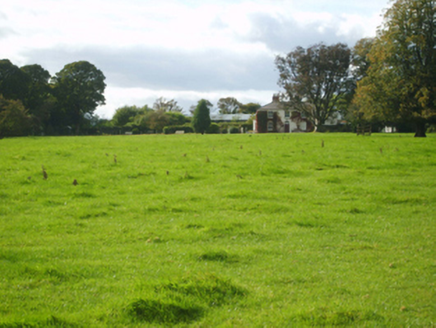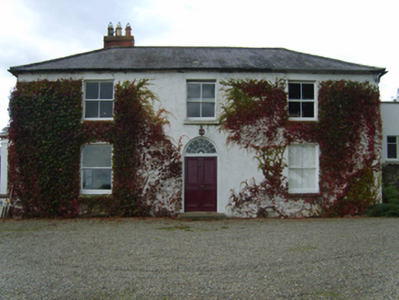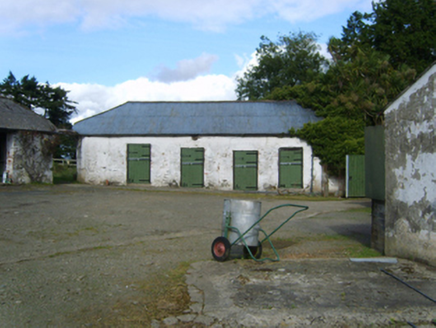Survey Data
Reg No
15700309
Rating
Regional
Categories of Special Interest
Architectural, Artistic, Historical, Social
Previous Name
Fortmount House
Original Use
Farm house
In Use As
Farm house
Date
1800 - 1840
Coordinates
318541, 168571
Date Recorded
26/09/2007
Date Updated
--/--/--
Description
Detached three-bay two-storey farmhouse, extant 1840, on an L-shaped plan with two-bay (south) or single-bay (north) two-storey side elevations. Occupied, 1901; 1911. Damaged, 1920. Sold, 1946. Resold, 1956. Hipped slate roof on an L-shaped plan with clay ridge tiles, red brick Running bond chimney stack on a T-shaped plan on chamfered cushion course on rendered base having stepped capping supporting terracotta or yellow terracotta tapered pots, and cast-iron rainwater goods on rendered eaves retaining cast-iron downpipes. Part creeper- or ivy-covered rendered, ruled and lined walls. Round- or segmental-headed central door opening with cut-granite step threshold, and concealed dressings framing timber panelled double doors having fanlight. Square-headed window openings with cut-granite sills, and concealed dressings framing one-over-one (ground floor) or two-over-two (first floor) timber sash windows. Interior including (ground floor): central hall retaining carved timber surrounds to door openings framing timber panelled doors; and carved timber surrounds to door openings to remainder framing timber panelled doors with timber panelled shutters to window openings. Set in landscaped grounds with benchmark-inscribed cut-granite monolithic piers to perimeter supporting wrought iron-detailed cast-iron "farm gate".
Appraisal
A farmhouse representing an integral component of the domestic built heritage of north County Wexford with the architectural value of the composition suggested by such attributes as the compact plan form centred on a restrained doorcase showing a simplified "peacock tail" fanlight; and the diminishing in scale of the openings on each floor producing a graduated visual impression with the principal "apartment" or reception room defined by a polygonal bay window. Having been well maintained, the elementary form and massing survive intact together with substantial quantities of the original fabric, both to the exterior and to the interior where contemporary joinery; chimneypieces; and plasterwork refinements, all highlight the artistic potential of the composition. Furthermore, adjacent "tin roofed" outbuildings (extant 1840) continue to contribute positively to the group and setting values of a self-contained estate having historic connections with the Moore family including William Moore (d. 1887), 'Gentleman late of Knockbawn [sic] County Wexford' (Calendars of Wills and Administrations 1887, 488); and Henry Higginbotham Moore (1867-1926), 'Farmer and Magistrate' (NA 1901; NA 1911); and the Nelson family including Sir James Hope Nelson (1883-1960).





